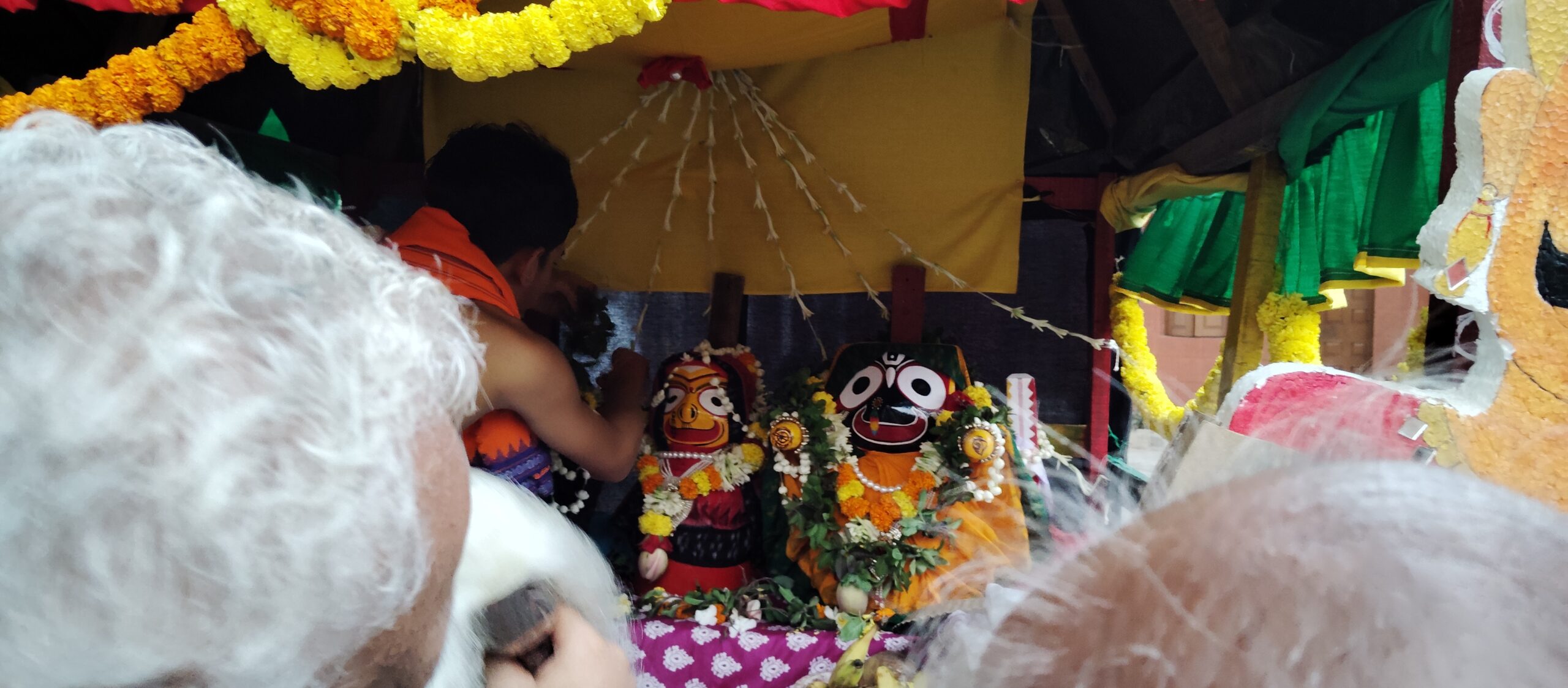- 0Shares
- 32 Views
Rath Yatra: A Glorious Festival of Chariots
Rath Yatra, also known as the Festival of Chariots, is a significant Hindu festival associated with Lord Jagannath, a form of Lord Vishnu, along with his siblings, Lord Balabhadra and Goddess Subhadra. The festival is celebrated with great enthusiasm and devotion primarily in the city of Puri in the Indian state of Odisha, but its fame and celebrations have transcended to various parts of India and across the globe. This grand event typically falls in the month of Ashadha (July), according to the Hindu lunar calendar.
This Rath Yatra was organized by the devotees of Rourkela ,started from Sector-19 Rourkela and taken to the Sarala Mandir Sector-18,Rourkela.
Historical and Mythological Significance
The origins of Rath Yatra can be traced back to ancient times, and the festival holds a deep mythological and cultural significance. According to legend, Lord Jagannath expressed his desire to visit his birthplace, Gundicha Temple, once every year along with his siblings. The journey symbolizes the return of Lord Jagannath to his childhood home. The festival is believed to have been celebrated since the 12th century, initiated by King Anantavarman Chodaganga Deva, who constructed the Puri Jagannath Temple.
Rituals and Preparations
The preparations for Rath Yatra begin well in advance. The construction of the three grand chariots for Lord Jagannath, Lord Balabhadra, and Goddess Subhadra is a meticulous process. Skilled artisans, following traditional methods passed down through generations, build these chariots from specific types of wood. Each chariot is unique in its design and size, reflecting the divine status of its occupant. The largest chariot, Nandighosa, is for Lord Jagannath, followed by Taladhwaja for Lord Balabhadra, and Darpadalana for Goddess Subhadra.
Before the main event, several rituals are performed, including the Snana Purnima, where the deities are bathed with 108 pots of sacred water. This is followed by the Anavasara period, during which the deities are kept away from public view to recover from the ceremonial bath. The ceremonial journey begins once the deities are brought out from the temple and placed on their respective chariots in a ritual called Pahandi.
The Grand Procession
On the day of Rath Yatra, the streets of Puri are thronged with millions of devotees. The procession begins with the ceremonial sweeping of the chariots by the Gajapati King of Puri, a tradition symbolizing humility and service to the deities. Amidst the chants of hymns, rhythmic beats of drums, and the resonating sound of conch shells, the chariots are pulled by thousands of devotees. This act of pulling the chariots, known as Chhera Pahara, is considered highly auspicious, and participants believe it earns them divine blessings.
The chariots make their way to the Gundicha Temple, a journey of about 3 kilometers, where the deities stay for nine days. This period is referred to as the Gundicha Yatra. The return journey, known as Bahuda Yatra, is equally grand, with the deities making their way back to the Jagannath Temple. On the way, the chariots stop at the Mausi Maa Temple, dedicated to Lord Jagannath’s aunt, where the deities are offered Poda Pitha, a special sweet.
Cultural and Social Impact
Rath Yatra is not just a religious event but a cultural extravaganza that brings together people from various walks of life. It promotes a sense of unity, devotion, and communal harmony. The festival has a significant economic impact on the region, boosting tourism and associated industries.
In recent years, Rath Yatra has gained international recognition, with celebrations being held in major cities around the world, organized by the International Society for Krishna Consciousness (ISKCON). These global celebrations highlight the universal appeal of the festival and its core message of devotion, unity, and the joyous celebration of life.
Conclusion
Rath Yatra stands as a testimony to India’s rich cultural heritage and deep-rooted spiritual traditions. The festival’s grandeur, coupled with its profound religious significance, continues to inspire and attract millions of devotees and admirers from around the world. The timeless traditions and the unwavering devotion that characterize Rath Yatra make it a unique and cherished celebration in the tapestry of Hindu festivals.





